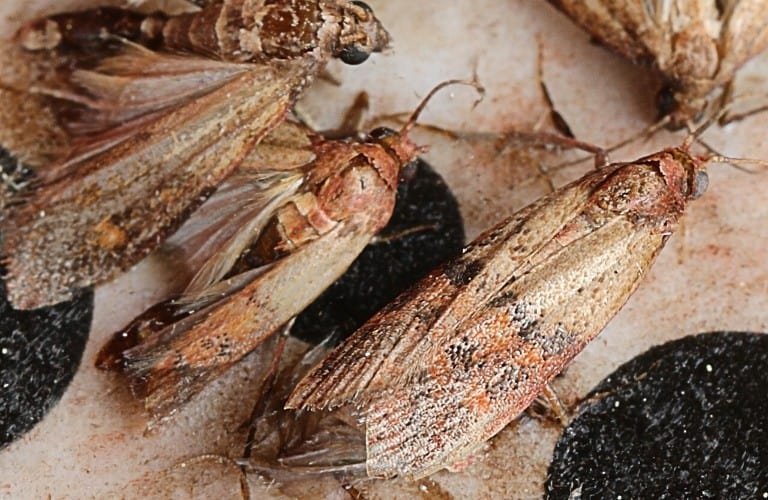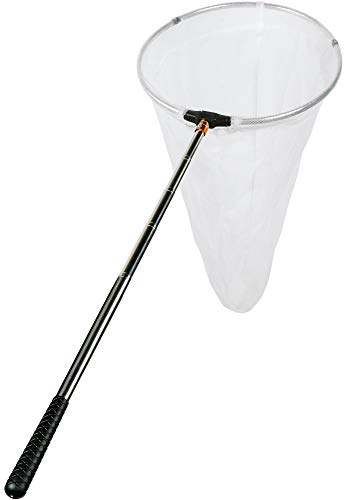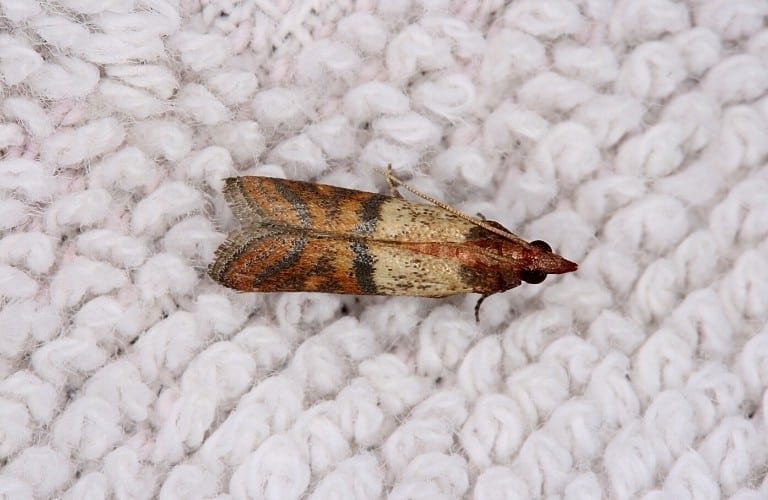It’s common to find a few moths flying around inside your house during the summer months. They sometimes fly in through an open door or broken screen window.
However, if you see a lot of moths, especially during the winter months, this may be a sign that you have an infestation living in your clothes or pantry goods.
How long do moths live inside a house? Moths may live indoors anywhere from a few days to a few months. Their lifespans vary widely depending on the species and whether or not they have access to food. An infestation of pest moths may last much longer than the life of the individual moths.
Read on to find out more about how long moths live, why they may take up residence in your house, and what you can do to get rid of them.
Don’t miss out on our complete moth prevention and elimination guide full of info on identification, tips to avoid infestation, and recommended products to use.
How Long Can Moths Live Without Oxygen?
While you may think that depriving a moth of oxygen will kill it in a few minutes, the opposite is closer to the truth.
Research suggests that insects in general may “hold their breath” for hours or even days.
They do this in order to take in just the right amount of oxygen, as too much oxygen could kill them.
While this research wasn’t specific to moths, it’s likely that it may apply to them.
The exact length of time that a moth can live without oxygen may depend on a number of factors.
Different species will have different needs and capacities for oxygen, and environmental factors, such as temperature, may also play a role.
Even the moth’s age may affect its oxygen needs.
Why It Matters
Think about the moths that get into dried foods.
Once a moth is inside a bag of food, even if you remove most of the air without managing to kill the moth, it will likely be able to stay alive at least long enough to reproduce, and maybe longer.
If insects don’t need a lot of oxygen to live, then even sealed bags won’t protect your food (or, for that matter, your clothes) after a moth or two has gotten inside.
Discover what foods moths are likely to go after in this article.
Do Moths Need Light to Live?
No doubt you’re aware that moths are drawn to light. (This is one reason they find their way indoors so easily. Learn more here.)
They’re generally nocturnal insects, and you’ve probably seen them swarming around porch lights or streetlights after dark.
Why do they do this? Is it because they need the light to live? There are many theories about why moths are attracted to the light.
Some scientists believe they may mistake any light source for the moon, which they use for navigational purposes.
Others suggest that moths are hesitant to leave a light source once they’ve reached it because returning to darkness will temporarily blind them.
Their attraction to the light seems to have nothing to do with a physical need for the light.
That said, nearly all living creatures, including moths, need a certain amount of light to survive. But, like oxygen, a little goes a long way.
For example, if you find moths living in woolen clothes that have been stored in your closet since last winter, they may have lived their entire lives seeing only what little light has filtered in whenever the closet door was opened.
So yes, most moths need some light to live, but they don’t seem to need as much as they want.
More often than not, in fact, getting too close to a hot light is what causes their death.
Best Ways to Catch a Moth
If a moth flies in through your front door, it may or may not be one of the pest species that will set up shop in your pantry or closet.
Either way, you’ll probably want to put it back outside. Of course, moths can be tricky to catch. What are some of the best ways to catch moths?
Let’s take a look below.
Try Sticky Traps
Sticky traps for moths work much like sticky traps for other pests. They have built-in attractant scents to lure any nearby moths to the trap.
Once moths climb inside, they stick to the glue and die.
There are different kinds of sticky traps.
Some are meant to be used inside closets and dresser drawers, like these stylish traps that attract with pheromones, to keep moth infestations from building up.
Others are made for cupboards and pantries to keep moths out of food.
Still others can be placed on countertops or near light sources, where moths are most likely to gravitate.
This 6-pack of glue traps is designed specifically for pantry moths and comes in two attractive designs, both of which can be placed directly on countertops as they are nontoxic.
Hanging strips of fly tape from ceiling fans or lamps is also an effective tool to use against moths.
The fly tape is sticky, and any moths who fly too close to the light will inevitably become stuck.
While using sticky traps isn’t exactly catch and release, it is probably the easiest method for getting rid of moths.
All you have to do is set the trap up and give it a little time.
Note that this is a much safer alternative to using mothballs, which are toxic. Learn about more mothball alternatives here.
Trap It in a Container
If you’re just dealing with a single moth that happened to fly in through an open door or window, you might be able to catch it using a glass or a plastic container.
The moth will probably fly around for a minute or two but may eventually land on a wall or door.
When you see the moth land, use your container to trap the moth. It may begin flying again inside the container.
Wait for it to settle onto the wall of the container, then slowly lift it away from the wall and put your hand or a lid over the top, trapping the moth inside. Take it outside and release it.
Use a Butterfly Net
If you have a butterfly net, like this one on Amazon, you may be able to use it in a similar way you would use a container.
The nice thing about using a net is you don’t have to wait for the moth to land.
Since the net will have a wider opening and provide a softer impact if the moth crashes into it, you may be able to catch the moth as it flies around.
As soon as you have caught the moth in the net, take it outside and release it.
When to Call Pest Control
Obviously, there’s a big difference between a moth flying through an open door and an infestation of pest moths.
But it can sometimes be difficult to tell if you have a moth problem. What are some ways to figure out if you should call an exterminator?
Firstly, take notice if you see a lot of small, similar-looking moths flying around your house, especially during winter or near closets and pantries.
If you notice moths flying away from clothing that hasn’t been used recently, explore a little deeper.
Damaged clothing, stains, caterpillars, and dead and live moths may all be signs of a moth infestation.
The same goes for pantry goods. Old food in poorly sealed packaging can be a breeding ground for moths.
Anytime you find a moth in your pantry, it’s a good idea to try and figure out where it came from.
If you suspect a moth infestation, especially one that involves a lot of moths and moth damage, it might be best to call pest control and let the professionals get rid of the moths for you.
Before you call a pest control service, read through our moth articles first to see how easy DIY elimination can be. Click here to see them all.
Final Thoughts
Many species of moth can not only survive but may thrive in your house.
Moths that fly inside chasing a light source are generally harmless, but keep an eye out for pest moths that may find their way into your pantry or closet.
If you suspect you have a moth infestation, do what you can to remove the moths and call for pest control if you need additional help.
Sources:






